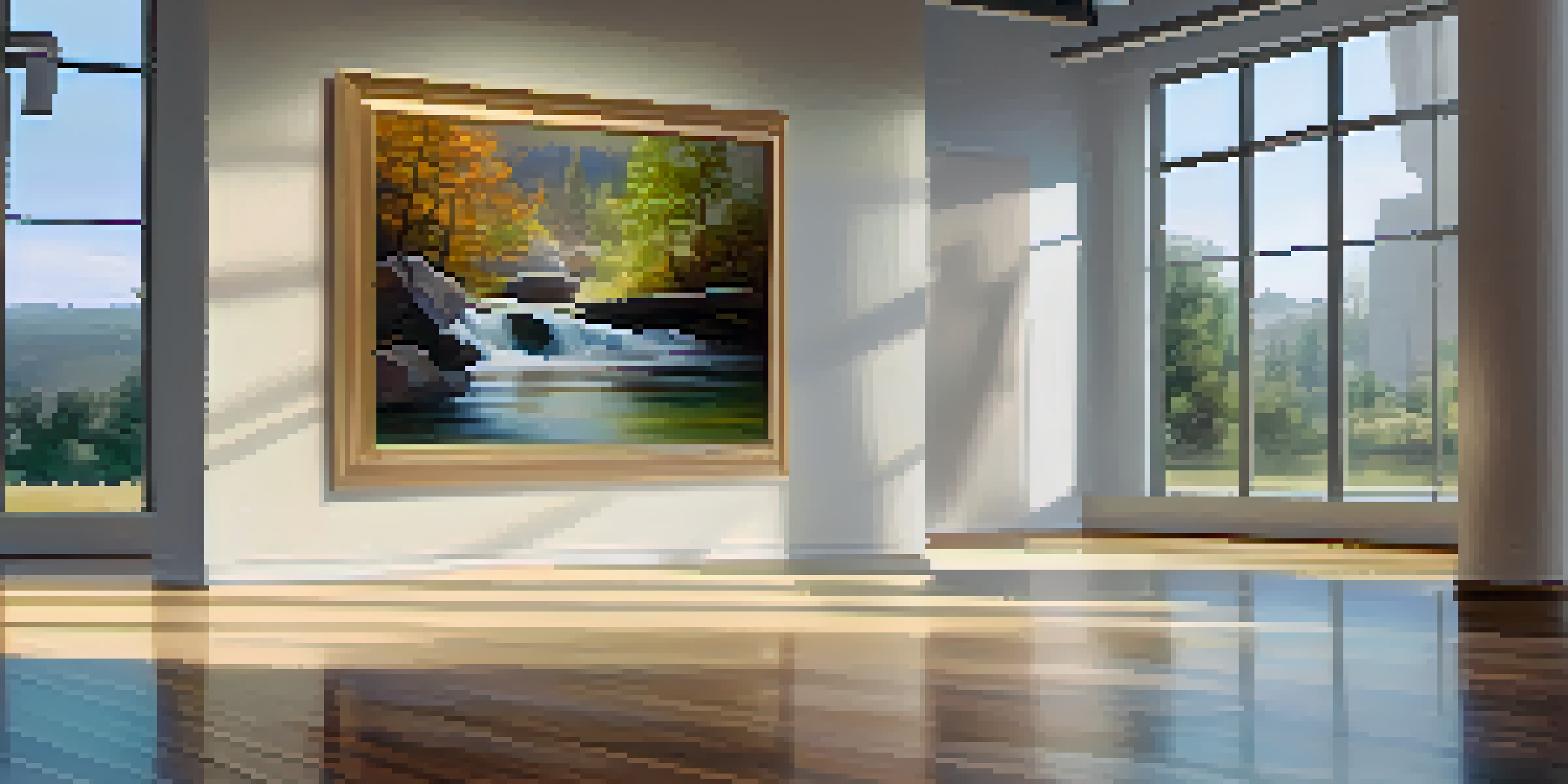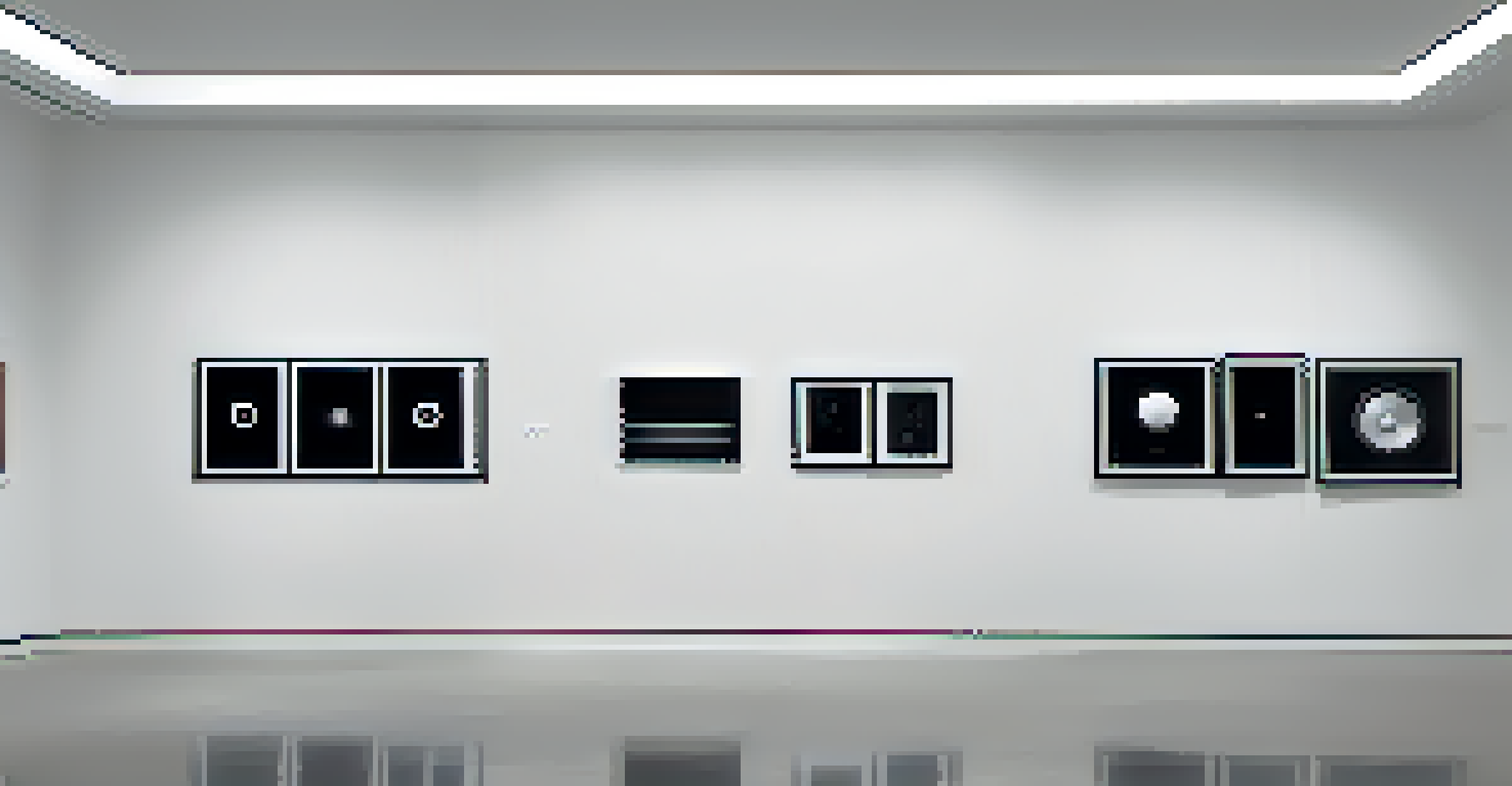Using Sound to Tell Stories in Visual Art Installations

The Intersection of Sound and Visual Art
Sound and visual art have long been intertwined, creating a multi-dimensional experience for viewers. While visual elements capture our attention, sound adds layers of meaning and emotion that can transform the narrative. Just like a movie score enhances the emotional impact of a scene, sound in art installations can provoke feelings and prompt reflections.
Art is the most beautiful of all lies; it is a representation of reality, but it is not reality itself. Sound adds another layer of truth to this representation.
Imagine walking into an art gallery; your eyes might be drawn to a stunning painting, but it’s the subtle sound of rustling leaves that transports you to a serene forest. This interplay enriches the overall experience, inviting viewers to engage more deeply. The right sound can evoke memories, feelings, and even spark conversations, turning a solitary experience into a communal one.
As artists explore this intersection, they often experiment with various audio elements, from spoken word to ambient sounds, blurring the lines between artistic mediums. This fusion creates a richer, more immersive environment that encourages us to see and hear art in new ways.
Creating Atmosphere with Sound
The atmosphere of an art installation is crucial in shaping how we interpret the artwork. Sound plays a pivotal role in establishing this ambiance, enhancing our emotional connection to the piece. For instance, soft, melodic tunes can create a sense of tranquility, while sharp, dissonant sounds may evoke tension or discomfort.

Consider an installation that features a serene landscape painting accompanied by the gentle sound of flowing water. This combination can make the viewer feel as if they are transported into that landscape, deepening their appreciation of both the visual and auditory elements. The atmosphere created by sound invites viewers to linger longer, allowing them to immerse themselves fully in the experience.
Sound Enhances Visual Art Experience
The integration of sound in visual art installations creates a multi-dimensional experience that deepens emotional connections and invites viewer engagement.
Moreover, sound can guide our attention, directing us to specific aspects of an installation we might otherwise overlook. By manipulating the auditory environment, artists can create focal points that enhance storytelling, leading us on a journey through their artistic vision.
Narrative Techniques in Sound Art
Sound can serve as a powerful narrative tool in visual art installations, telling stories that complement or contrast with the visual elements. Artists often utilize voiceovers, soundscapes, or even silence to convey themes and emotions, adding depth to the viewer's experience. This storytelling approach can transform a static visual into a dynamic narrative.
Sound is the vocabulary of nature. When combined with visual art, it creates a dialogue that transcends traditional boundaries.
For example, an installation featuring images of historical events paired with recorded testimonies can evoke a profound sense of connection to the past. The voices of those who lived through those moments breathe life into the visuals, making the experience more relatable and poignant. Such techniques allow viewers to engage not just with the art but with the narratives woven into it.
Sound's ability to convey time and place also enhances storytelling. By incorporating sounds that reflect a specific era or environment, artists can transport viewers to different contexts, enriching the narrative experience.
Engaging the Audience Through Sound
Audience engagement is a key aspect of any art installation, and sound can play a significant role in fostering that connection. When sound is integrated thoughtfully, it invites viewers to become active participants rather than passive observers. This interaction can take many forms, from encouraging viewers to listen closely to the sounds around them to prompting them to reflect on their sensory experiences.
Think of an installation where visitors are invited to interact with sound-producing elements, such as instruments or devices that create ambient noise. This hands-on approach not only captivates their attention but also allows them to leave their mark on the artwork. Such engagement transforms the experience into a collaborative effort, making it memorable and personal.
Silence Plays a Key Role in Art
Silence can be a powerful narrative tool, creating tension and allowing space for reflection, which enhances the overall impact of the artwork.
Furthermore, sound can create a sense of community among viewers. As people share their reactions to the soundscapes, they forge connections, sparking conversations and shared experiences around the artwork.
The Role of Silence in Storytelling
Silence is often an overlooked element in sound art, yet it can be just as impactful as sound itself. In storytelling, silence can create tension, draw attention to specific moments, or allow space for reflection. When used strategically, silence invites viewers to pause and consider the meaning behind the visuals, offering a moment of contemplation.
For instance, an installation featuring dramatic imagery might include long stretches of silence to heighten the emotional weight of the visuals. This absence of sound can amplify feelings of loss or nostalgia, prompting viewers to engage with the artwork on a deeper level. By contrasting sound and silence, artists can create a compelling narrative dynamic.
Additionally, silence can serve as a powerful backdrop against which sound can emerge. This interplay encourages viewers to listen more intently, making the subsequent sounds even more striking and memorable.
Challenges in Integrating Sound into Visual Art
While the integration of sound in visual art offers many benefits, it also presents challenges that artists must navigate. One significant challenge is ensuring that the sound complements rather than overwhelms the visual elements. Striking the right balance is essential; otherwise, the viewer may become distracted, losing the intended message of the artwork.
Moreover, technical issues can arise, such as sound quality and equipment limitations, which can hinder the overall experience. Artists must be mindful of these factors during the planning and execution stages to create a cohesive installation that resonates with audiences. This often means testing various sound elements and making adjustments until the perfect harmony is achieved.
Future Innovations in Art and Sound
Advancements in technology, such as virtual and augmented reality, are expanding the possibilities for integrating sound into visual art, leading to richer and more immersive experiences.
Finally, artists must consider their audience when integrating sound. Different individuals may interpret sounds differently based on personal experiences, so it’s important to create an inclusive environment that speaks to a diverse audience.
The Future of Sound in Visual Art Installations
As technology continues to evolve, the possibilities for integrating sound into visual art installations are expanding. Innovations such as virtual reality, augmented reality, and immersive audio experiences are reshaping how artists create and present their work. These advancements open up new avenues for storytelling that were previously unimaginable.
For instance, artists can now create fully immersive environments where viewers can interact with both sound and visuals in real-time. This level of engagement not only enhances the storytelling aspect but also allows for a more personalized experience, as each viewer can explore the artwork in their own unique way.

Looking ahead, it will be exciting to see how artists continue to push the boundaries of sound in visual art. As they experiment with new technologies and techniques, the narratives they craft will undoubtedly become richer and more complex, inviting audiences to explore the world of art through a multi-sensory lens.